Ram Temple
For Prelims: Liberhan Commission, Supreme Court, Girmitiya Migration, 00 Year Old Journey of Ram Temple, Nagara Style of Temple Architecture.
For Mains: 200-Year-Old Journey of Ram Temple.
Why in News?
On 22nd January 2024, the Ram temple in Ayodhya was inaugurated, marking the completion of a 200-year-old saga that profoundly impacted India's socio-political landscape.
- The Ram temple has been designed in the Nagara Style of Temple Architecture.
- The story of Ram is popular from Laos, Cambodia and Thailand in Asia to Guyana in South America to Mauritius in Africa, making Ramayana Popular outside India.
What is the Timeline of Ram Janmabhoomi Movement?
- Origin:
- Originating in 1751 when the Marathas appealed to the Nawab of Awadh (Nawab Shuja-ud-Daula) for control of Ayodhya, Kashi, and Mathura.
-
The Marathas had helped the Nawab of Awadh in defeating the Pathan (local chieftain) forces in the Doab Region and as a result, they sought control over these important religious and cultural centres like Ayodhya, Kashi (Varanasi), and Mathura.
-
The Doab Region refers to the area between the Ganges and Yamuna rivers in northern India.
-
-
The movement gained momentum in the 19th century with judicial records dating back to 1822 mentioning a mosque on the birthplace of Lord Ram.
- Clash Near Babri Masjid:
- Tensions escalated in 1855 with a violent clash near the Babri Masjid between Hindus and Muslims, leading to the capture of Janmasthan by Hindus.
- Placement of the idol of Ram Lalla:
- The year 1949 saw the placement of the idol of Ram Lalla in the mosque, sparking demands for a grand temple.
- Legal Battles:
- In the 1980s, the Vishwa Hindu Parishad (VHP) initiated a movement for the 'liberation' of Ram Janmabhoomi, Krishna Janmabhoomi, and Vishwanath shrine.
- Legal battles ensued, and in 1986, the locks of the Babri Masjid were opened, allowing Hindus to offer prayers.
- The following years witnessed significant events, including the foundation-laying ceremony in 1989 and the Rath Yatra led by LK Advani in 1990, leading to widespread riots.
- Demolition of Babri Masjid:
- On 6th December 1992, a mob demolished the Babri Masjid, leading to political repercussions and legal proceedings.
- In 1993, Parliament passed the Acquisition of Certain Area at Ayodhya Act, allowing the government to acquire the disputed Ram Janmabhoomi-Babri Masjid land.
- The Liberhan Commission, in 2009, highlighted the premeditated nature of the events in 1992.
- Allahabad High Court Verdict:
- In 2010, a special bench of the Allahabad High Court in its Ayodhya title suit judgment divided the land in a 2:1 ratio, with two-thirds of the 2.77-acre, including the garbha griha, going to litigants for a Ram temple – Shri Ram Lala Virajman and Nirmohi Akhara.
- One-third of the land was given to the Sunni Central Waqf Board.
- Supreme Court Verdict:
- Legal proceedings continued, and in 2019, the Supreme Court awarded the entire disputed land to the Hindu petitioners for a Ram temple and allocated land for a mosque elsewhere.
- Culmination:
- The culmination of this historic journey occurred on 5th August, 2020, when the Indian Prime Minister performed the Shilanyas of the Ram temple, establishing the Shri Ram Janmabhoomi Teerth Kshetra Trust.
- On 22nd January 2024, the Ram temple in Ayodhya, built in Nagara Style, was set to be inaugurated, marking the completion of a 200-year-old saga that profoundly impacted India's socio-political landscape.
What is the Uniqueness of Ram Temple?
- Traditional Architecture and Construction:
- This is a 3-storey temple, built in the traditional Nagara style, standing tall with pink sandstone from Mirzapur and the hills of Bansi-Paharpur (Rajasthan).
- Temple covers an expansive 71 acres, showcasing the architectural marvel.
- Temple Dimensions:
- Spanning 250 feet in width and 161 feet in height, the main temple area covers 2.67 acres, boasting 390 pillars, 46 doorways, and 5 mandaps.
- Unique Features Inside:
- The main Garbh Griha holds the idols of Ram Lalla, accompanied by multiple mandaps, including Rang Mandap & Nritya Mandap.
- Innovative Anointment Tradition:
- On every Ram Navami at noon, a system of mirrors and lenses will focus the sun's rays on Ram Lalla’s idol. This unique anointment requires no electricity, utilizing brass instead of iron or steel.
- Sculptor's Contribution:
- The idol of five-year-old Ram Lalla, crafted by Mysuru sculptor Arun Yogiraj, stands at 51 inches and was consecrated in a special ceremony.
- Durability and Symbolism:
- No iron has been used in the temple's construction, designed to endure for at least a millennium.
What is the Nagara Style of Temple Architecture?
- About:
- The Nagara style of temple architecture emerged sometime in the 5th century CE, during the late Gupta period, in northern India.
- It is seen in juxtaposition with the Dravida style of southern India, which too emerged in the same period.
- Distinguished by a Towering Shikhara:
- Nagara temples are built on a raised plinth, with the Garbha Griha (sanctum sanctorum) — where the idol of the deity rests — the most sacred part of the temple.
- Towering over the Garbha Griha is the shikhara (literally ‘mountain peak’), the most distinguishable aspect of Nagara-style temples.
- As the name suggests, shikharas are human-made representations of the natural and cosmological order, as imagined in Hindu tradition.
- A typical Nagara-style temple also comprises a circumambulatory passage around the garbha griha, and one or more mandapas (halls) on the same axis as it. Elaborate murals and reliefs often adorn its walls.
Note
- Meru, Mandara and Kailasa are the first three names amongst the twenty types of temples described in the early texts, all three are the names of the Mountain, which is the axis of the world.
- Five Modes of Nagara Architecture:
- Valabhi:
- Phamsana:
- Latina:
- The Latina is a shikhara that is a single, slightly curved tower with four sides of equal length. It emerged in the Gupta heartland, was complete with curvature by the early seventh century, and spread across the entire breadth of northern India. For three centuries, it was considered the peak of Nagara temple architecture.
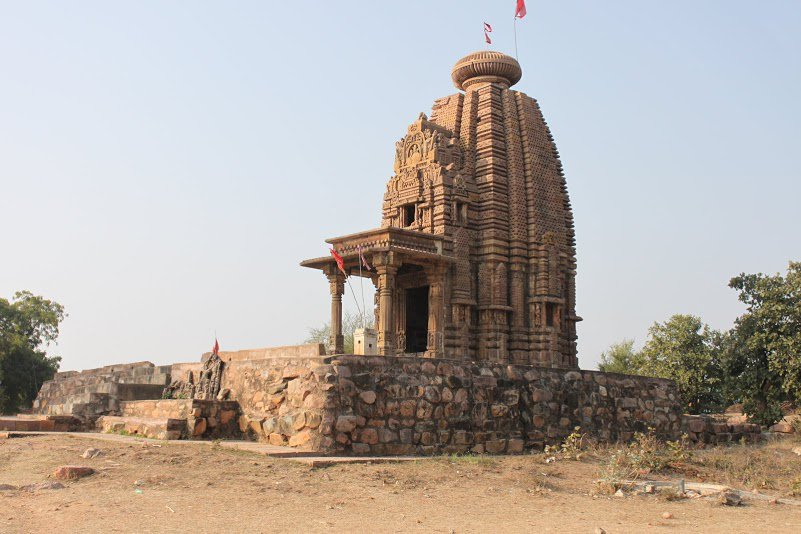
- The Latina is a shikhara that is a single, slightly curved tower with four sides of equal length. It emerged in the Gupta heartland, was complete with curvature by the early seventh century, and spread across the entire breadth of northern India. For three centuries, it was considered the peak of Nagara temple architecture.
- Shekhari:
- Bhumija:
- The Bhumija mode involves miniature spires arranged in horizontal and vertical rows, creating a grid-like effect on each face of the shikhara. The actual shikhara often approaches a pyramidal shape, with the curve of the Latina less visible. This style emerged from composite Latinas in the tenth century onwards.
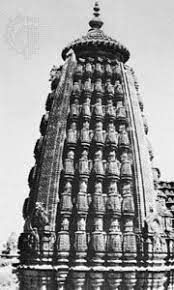
- The Bhumija mode involves miniature spires arranged in horizontal and vertical rows, creating a grid-like effect on each face of the shikhara. The actual shikhara often approaches a pyramidal shape, with the curve of the Latina less visible. This style emerged from composite Latinas in the tenth century onwards.
How has Shri Ram and Ramayana Become Popular Outside India?
- Trade Routes and Cultural Exchange:
- The Ramayana spread through trade routes, both by land and sea. Indian traders, travelling for commerce, carried with them not only goods but also cultural elements, including religious stories.
- Land routes, such as the northern route through Punjab and Kashmir, and the eastern route through Bengal, facilitated the transmission of the Ramayana to regions like China, Tibet, Burma, Thailand, and Laos.
- Sea routes, particularly the southern route from Gujarat and South India, led to the dissemination of the epic in places like Java, Sumatra, and Malaya.
- Cultural Transmission by Indian Communities:
- Indian traders, accompanied by Brahmin priests, Buddhist monks, scholars, and adventurers, played a crucial role in transmitting Indian culture, traditions, and philosophy to the people of Southeast Asia.
- Over time, the Ramayana became an integral part of the culture of many Southeast Asian countries, influencing art, architecture, and religious practices.
- Integration into Local Culture:
- The Ramayana integrated with local cultures in various ways. For example, in Thailand, the Ayutthaya kingdom is believed to have been based on the Ayodhya of the Ramayana.
- In Cambodia, the Angkor Wat temple complex, originally dedicated to Vishnu, features murals depicting scenes from the Ramayana.
- Evolution of the Epic:
- The Ramayana took on local flavors and variations in different regions. For instance, the Ramakien in Thailand, influenced by the Tamil epic Kamban Ramayana, became Thailand's national epic.
- Various adaptations in different countries incorporated unique elements, such as the depiction of characters with Tamil names in the Thai Ramakien.
- Spread Through Indentured Labor Migration:
- In the 19th century, the Girmitiya Migration resulted in the spread of the Ramayana to regions like Fiji, Mauritius, Trinidad and Tobago, Guyana, and Suriname.
- Indentured laborers carried their cultural and religious practices, including the Ramcharitmanas, with them to new lands.
- Enduring Themes and Universality:
- The Ramayana served as a source of cultural identity and nostalgia for Indian communities living far away from their homeland. It provided a connection to their roots and a sense of familiarity in alien lands.
- The themes of the Ramayana, such as the triumph of good over evil, the concept of dharma, and the narrative of exile and return, resonate universally, making the epic relatable to diverse cultures.
- Continued Cultural Practices:
- Even today, the Ramayana remains a significant part of the cultural fabric in many Southeast Asian countries. It is kept alive through various art forms, including plays, dance dramas, puppet shows, and religious ceremonies.
UPSC Civil Services Examination Previous Year Question (PYQ)
Prelims
Q. The Nagara, the Dravida and the Vesara are the (2012)
(a) three main racial groups of the Indian subcontinent
(b) three main linguistic divisions into which the languages of India can be classified
(c) three main styles of Indian temple architecture
(d) three main musical Gharanas prevalent in India
Ans: c
Mains
Q. Chola architecture represents a high watermark in the evolution of temple architecture. Discuss (2013)
Q. Indian philosophy and tradition played a significant role in conceiving and shaping the monuments and their art in India. Discuss. (2020)
Social Audit Advisory Body
For Prelims: Social Audit Advisory Body, Framework Associated with Social Audit in India, Mahatma Gandhi National Rural Employment Guarantee Act , Gram sabha, Right to Information Act, 2005, National Resource Cell for Social Audit.
For Mains: Key Features of Social Audit, Challenges Related to Social Audit In India.
Why in News?
Recently, the inaugural meeting of the Social Audit Advisory Body (SAAB) took place at the Dr. Ambedkar International Centre in New Delhi.
- This pioneering advisory body aims to guide the Ministry of Social Justice & Empowerment in the institutionalisation of social audits across its diverse schemes.
What is a Social Audit?
- About:
- A social audit is a systematic, independent assessment of an organization's or program's social impact and ethical performance.
- It evaluates how well their actions and policies align with their stated values and goals, particularly regarding their impact on communities, employees, and the environment.
- Howard Bowen proposed the term “social audit” in his 1953 book Social Responsibilities of the Businessman.
- Key Features of Social Audit:
- Fact finding not fault finding.
- Creating the space and platform for dialogue among various levels of stakeholders.
- Timely grievance redressal.
- Strengthening the democratic process and institutions.
- Building people's pressure for better implementation of programmes.
- Types of Social Audits:
- Organisational: Assessing a company's overall social responsibility efforts.
- Program-Specific: Focusing on a particular program's impact and effectiveness.
- Financial: Reviewing the social and environmental implications of financial decisions.
- Stakeholder-Driven: Involving various stakeholders in the auditing process.
Note
In India, Tata Iron and Steel Company Limited (TISCO), Jamshedpur, was the first company to perform social audits in 1979 for measuring its social performance. Mazdoor Kisan Shakti Sangathan (MKSS) started the concept of social audit while fighting corruption in the public works in the early 1990s.
- Framework Associated with Social Audit in India:
- Mahatma Gandhi National Rural Employment Guarantee Act (MGNREGA) 2005: Section 17 of the Act stipulates that the gram sabha is responsible for monitoring work execution.
- Independent social audit units in each state are mandated to operate independently from implementing authorities, emphasising community-driven verification of program implementation.
- The Meghalaya Community Participation and Public Services Social Audit Act, 2017: This state-level legislation stands as the first of its kind in India, making social audits a mandatory practice.
- Framework for Social Audit on Implementation of BOCW Act: The Ministry of Labour & Employment has issued a framework for conducting social audits under the Building and Other Construction Workers (Regulation of Employment and Conditions of Service) Act, 2013.
- Right to Information Act, 2005: It has played a significant role in supporting the Social Audit system in India. It enhances transparency and access to information, which underpins the effectiveness of social audits by providing access to relevant documents and data.
- National Resource Cell for Social Audit (NRCSA): The Department of Social Justice and Empowerment has established the NRCSA. This entity ensures social audits through dedicated Social Audit Units at the state level.
- Mahatma Gandhi National Rural Employment Guarantee Act (MGNREGA) 2005: Section 17 of the Act stipulates that the gram sabha is responsible for monitoring work execution.
- Challenges Related to Social Audit In India:
- Lack of Standardization: The absence of standardised procedures for social audits lead to variations in methodologies and reporting. A lack of uniformity makes it difficult to compare results across different projects and regions.
- Lack of Awareness and Capacity: Limited awareness and understanding of social audit processes among stakeholders, including local communities, can hinder effective implementation.
- Limited participation from marginalized or vulnerable groups in the social audit process lead to incomplete or biased assessments.
- Political Interference: Social audits face political interference, influencing the independence and objectivity of the audit process. Pressure from local authorities or political figures can compromise the integrity of the findings.
- Resource Constraints: Social audits require resources, both financial and human. Many local bodies lack the necessary funds and expertise to conduct comprehensive social audits, limiting their effectiveness.
- Limited Capacity and Training: The social audit units, which are meant to detect any cases of malpractice, are suffering because of lack of funds and trained professionals.
Way Forward
- Blockchain for Transparency: Explore the use of blockchain technology to enhance transparency and integrity in social audits. Blockchain can provide a secure and tamper-proof platform for storing audit information, ensuring the authenticity of data.
- Accessibility and Representation: Simplify audit processes and make information readily available in local languages and formats.
- Ensure diverse participation from marginalised groups, women, and youth through targeted incentives.
- Standardisation and Whistleblower Protection: Develop clear and uniform guidelines for conducting social audits across different programs and states.
- Enact strong legal safeguards to protect individuals who report irregularities.
UPSC Civil Services Examination, Previous Year Question:
Q. An independent and empowered social audit mechanism is an absolute must in every sphere of public service, including judiciary, to ensure performance, accountability and ethical conduct. Elaborate. (2021)
India-Bangladesh Relations
For Prelims: India-Bangladesh Relations, Bangladesh Liberation War, Russia-Ukraine War, Comprehensive Economic Partnership Agreement (CEPA), Ganga Waters Treaty.
For Mains: India-Bangladesh Relations, Bilateral, regional and global groupings and agreements involving India and/or affecting India’s interests.
Why in News?
Recently, the Prime Minister of Bangladesh Sheikh Hasina returned to power in Bangladesh for a historic fourth straight term. India was among the first countries to congratulate, illustrating the close bilateral relationship between the two countries.
How Have the Ties Between India-Bangladesh Flourished?
- Historical Ties:
- The foundation of India’s relationship with Bangladesh was laid in the 1971 Bangladesh Liberation War. India provided critical military and material support to assist Bangladesh in its fight for independence from Pakistan.
- Despite this, relations soured within a few years as military regimes took control. There was a rise in anti-India sentiment in the mid-1970s over issues ranging from boundary disputes and insurgency to the sharing of water.
- The instability continued for a few decades until Sheikh Hasina came to power in 1996 and scripted a new chapter in bilateral ties with a treaty on the sharing of Ganga waters.
- Since then, India and Bangladesh have built cooperation in Trade, Energy, Infrastructure, Connectivity and Defence.
- Economic Cooperation:
- Bilateral trade between India and Bangladesh has grown steadily over the last decade.
- Bangladesh has emerged as India’s largest trade partner in South Asia, with bilateral trade reaching USD 18 billion in 2021-2022 from USD 10.8 billion in 2020-21, though there was a dip in 2022-23 due to the Covid-19 pandemic and the Russia-Ukraine War.
- India is also the second biggest trade partner of Bangladesh, with exports amounting to USD 2 billion in Indian markets.
- In 2022, both nations concluded a joint feasibility study on a Comprehensive Economic Partnership Agreement (CEPA). The CEPA gains additional significance as Bangladesh is set to lose its Least Developed Country (LDC) status after 2026, thereby losing its duty-free and quota-free market access in India.
- Bangladesh will be eager to finalize a Free Trade Agreement (FTA) with India, and also pursue the China-backed Regional Comprehensive Economic Partnership (RCEP). This dual approach raises concerns for India.
- Infrastructure:
- Since 2010, India has extended Lines of Credit to Bangladesh worth over USD 7 billion.
- India and Bangladesh have successfully resolved long-pending issues, like the Land Boundary Agreement (LBA) in 2015 and a maritime dispute over territorial waters.
- India and Bangladesh in 2023 inaugurated the Akhaura-Agartala Rail Link that connects Bangladesh and the northeast through Tripura.
- The link has given India access to Chattogram and Mongla ports in Bangladesh for the movement of cargo.
- It is likely to boost small-scale industries and development in Assam and Tripura.
- The BIMSTEC Master Plan for Transport Connectivity focuses on connecting major transport projects in India, Bangladesh, Myanmar and Thailand, thereby establishing a shipping network.
- India will focus on the Matarbari Port, 100 km from Tripura, being built by Bangladesh. This port will create a vital industrial corridor connecting Dhaka and Northeast India.
- Energy:
- In the energy sector, Bangladesh imports nearly 2,000 megawatts (MW) of electricity from India.
- In 2018, Russia, Bangladesh and India signed a memorandum on cooperation in the implementation of the Rooppur Nuclear power plant project, Bangladesh's first nuclear power reactor.
- Defence Cooperation:
- India and Bangladesh share 4096.7 km of border; the longest land boundary that India shares with any of its neighbors.
- Assam, West Bengal, Mizoram, Meghalaya, and Tripura share borders with Bangladesh.
- The two also conduct Joint Exercises - Army (Exercise Sampriti) and Navy (Exercise Bongo Sagar).
- India and Bangladesh share 4096.7 km of border; the longest land boundary that India shares with any of its neighbors.
- Multilateral Cooperation:
- India and Bangladesh are also engaged in regional cooperation through multilateral forums such as SAARC (South Asian Association for Regional Cooperation), BIMSTEC (Bay of Bengal Multi-Sectoral Technical and Economic Cooperation) and Indian Ocean Rim Association (IORA).
What are the Points of Tensions Between India and Bangladesh?
- Sharing of Transboundary River Waters:
- India and Bangladesh share 54 common rivers, but only two treaties have been signed so far of Ganga Waters Treaty and The Kushiyara River Treaty.
- The other major rivers, such as the Teesta and Feni are still under negotiation.
- India and Bangladesh share 54 common rivers, but only two treaties have been signed so far of Ganga Waters Treaty and The Kushiyara River Treaty.
- Illegal Migration:
- The issue of illegal migration from Bangladesh to India, encompassing both refugees and economic migrants, continues to be a significant concern.
- This influx strains Indian border states, impacting resources and security. The problem intensified with Rohingya refugees entering India through Bangladesh.
- The National Register of Citizens (NRC), aimed at curbing such migration, has raised concerns in Bangladesh.
- Bangladesh seeks Indian support in persuading Myanmar to take back the Rohingyas who were forced to take refuge in Bangladesh.
- Drug Smuggling & Trafficking:
- There have been many incidences of cross border drug smuggling & trafficking. Humans (especially children & women) are trafficked & various animal & bird species are poached through these borders.
- Growing Chinese Influence in Bangladesh:
- At present, Bangladesh is an active partner in the Belt and Road Initiative (BRI) (India is not a part of BRI).
- China's increasing involvement with Bangladesh could potentially undermine India's regional standing and impede its strategic aspirations.
Way Forward
- There is a need to establish joint task forces comprising law enforcement agencies from both countries to effectively combat cross-border drug smuggling and human trafficking.
- Shared intelligence and coordinated operations can disrupt illegal networks.
- Implementing smart border management solutions that utilise Artificial Intelligence (AI) and data analytics can streamline cross-border movements while ensuring security and efficiency.
- There is a need to establish a digital connectivity corridor between the two countries, focusing on high-speed internet connectivity, digital services, and e-commerce. This can create new avenues for trade, collaboration, and technological exchange.
UPSC Civil Services Examination, Previous Year Question (PYQ)
Q. With reference to river Teesta, consider the following statements: (2017)
- The source of river Teesta is the same as that of Brahmaputra but it flows through Sikkim.
- River Rangeet originates in Sikkim and it is a tributary of river Teesta.
- River Teesta flows into Bay of Bengal on the border of India and Bangladesh.
Which of the statements given above is/are correct?
(a) 1 and 3 only
(b) 2 only
(c) 2 and 3 only
(d) 1, 2 and 3
Ans: (b)
Mains
Q. Analyze internal security threats and transborder crimes along Myanmar, Bangladesh and Pakistan borders including Line of Control (LoC). Also discuss the role played by various security forces in this regard. (2018)
19th NAM Summit and India-Uganda Relations
For Prelims: Non-Aligned Movement, 19th Summit of the NAM, Double Taxation Avoidance Agreement
For Mains: India-Uganda Relations, Non-Aligned Movement (NAM), Challenges with NAM
Why in News?
Recently, Ugandan President Yoweri Museveni, who hosted the 19th Summit of the Non-Aligned Movement in Kampala, expressed his regret over the expulsion of Indians by Idi Amin in the 1970s.
- He praised the achievements of the Indian diaspora in Uganda and lauded India’s role in the global south.
What are the Key Highlights of the 19th Summit of the Non-Aligned Movement?
- The 19th Summit of the NAM was held in Kampala, Uganda, with the theme of "Deepening Cooperation for Shared Global Affluence".
- Uganda has taken over as chair from Azerbaijan, to run until 2027.
- The summit adopted the Kampala Declaration, slamming Israeli military aggression and calling for the implementation of the UN Security Council resolution to allow humanitarian aid into the besieged Gaza Strip.
- The External Affairs Minister (EAM) of India led the Indian delegation at the 19th NAM Summit, calling for a sustainable solution to the Gaza crisis. He emphasised the need for immediate relief in the humanitarian crisis and urged the prevention of the conflict's spread in the West Asian region.
- The NAM was established in 1961 in Belgrade, Yugoslavia, through the initiative of five leaders of newly independent countries: Josip Broz Tito of Yugoslavia, Gamal Abdel Nasser of Egypt, Jawaharlal Nehru of India, Sukarno of Indonesia, and Kwame Nkrumah of Ghana.
- It was formed during the Cold War as an organisation of States that did not seek to formally align themselves with either the United States or the Soviet Union but sought to remain independent or neutral.
- At present, the Movement has 120 Member States, 17 Observer Countries and 10 Observer organizations.
- NAM does not have a permanent secretariat or a formal founding charter, act, or treaty.
- The summit usually takes place every three years.
What Happened to the Indians in Uganda under Idi Amin?
- In August 1972, Idi Amin, the dictator of Uganda, ordered the expulsion of Indians and other Asians who were living and working in Uganda.
- Around 80,000 Indians were forced to leave the country within 90 days, leaving behind their properties and businesses.
- The expulsion had a devastating impact on the Ugandan economy, which suffered from a loss of skilled workers, entrepreneurs, and investors.
How have been India-Uganda Relations?
- Political Relations:
- India and Uganda share historical relations spanning over a century. Indians first came to Uganda at the beginning of the 20th century.
- India’s freedom struggle inspired the early Ugandan activists to fight colonization and eventually Uganda achieved freedom in 1962.
- India established its diplomatic presence in Uganda in 1965. During the reign of President Amin in the early 1970s, around 60,000 Indians/PIOs were expelled. However, After Amin was overthrown in 1979, the succeeding governments of Uganda invited the expelled Indians to return and reclaim their properties and citizenship.
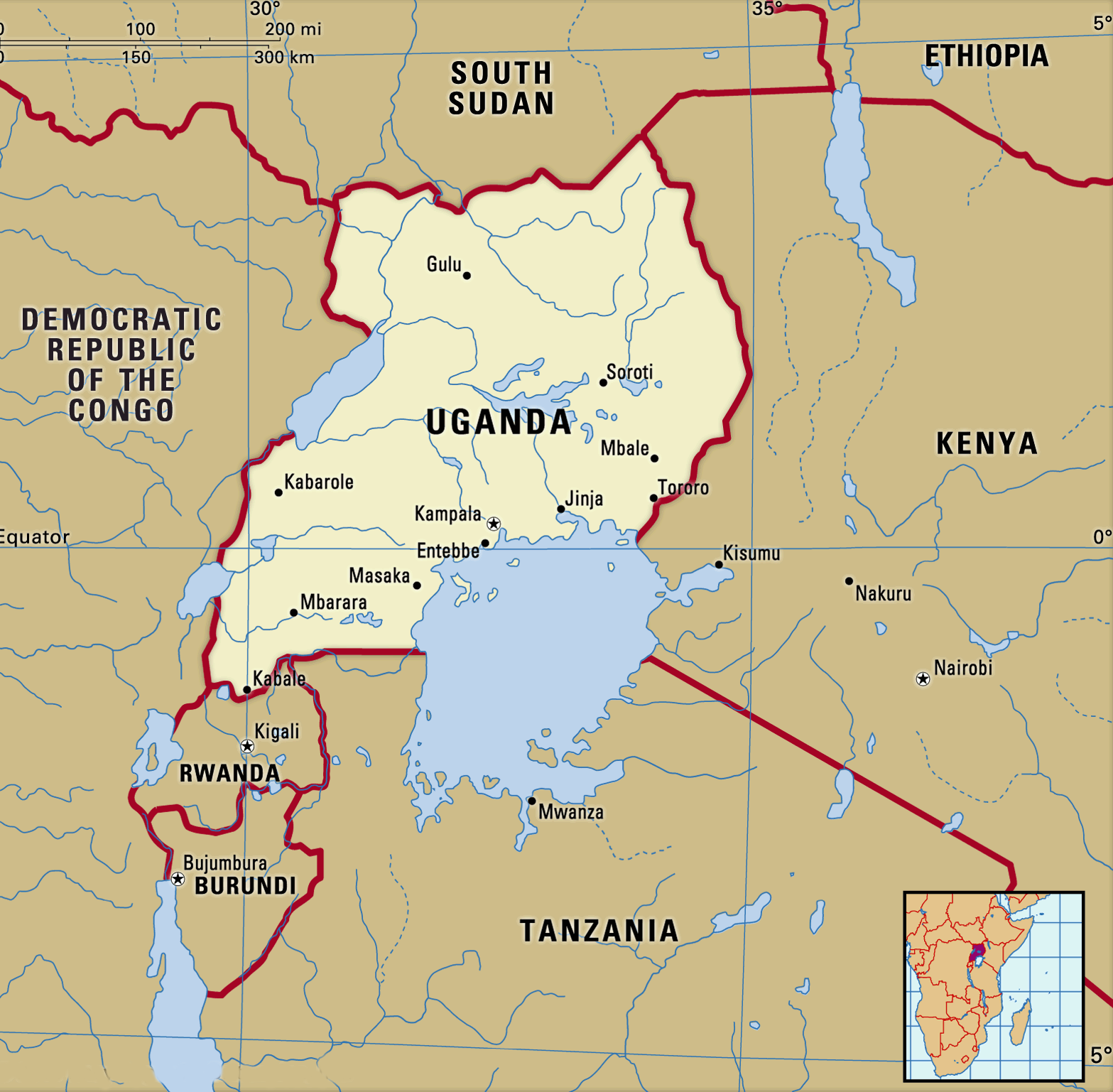
- India and Uganda share historical relations spanning over a century. Indians first came to Uganda at the beginning of the 20th century.
- Indian Diaspora:
- The Indian community presents the strongest and most durable economic and cultural links with Uganda.
- Indian Nationals/PIOs who constitute less than 0.1% of Uganda’s population, contribute about 70% of Uganda’s direct taxes as per statistics of the Bank of Uganda and the Uganda Revenue Authority.
- ‘India Day’, an annual feature, showcases Indian culture and attracts thousands of visitors. The event serves to bring together the Indian and Ugandan communities.
- Defence
- India conducts training courses for Uganda’s defence personnel.
- Commercial Relations:
- Uganda is a beneficiary of the Duty Free Tariff Preference (DFTP) Scheme of India for Least Developed Countries(LDCs).
- Major items of Indian exports to Uganda include pharmaceutical products, vehicles, plastic, paper and paperboard, organic chemicals.
- Major commodities of imports from Uganda to India are edible vegetables and certain roots and tubers, coffee, tea, mate and spices and cocoa and cocoa preparation.
- A Double Taxation Avoidance Agreement between India and Uganda is in effect since 2004.
- A DTAA is a tax treaty signed between two or more countries. Its key objective is that tax-payers in these countries can avoid being taxed twice for the same income.
- A DTAA applies in cases where a taxpayer resides in one country and earns income in another.
- A DTAA is a tax treaty signed between two or more countries. Its key objective is that tax-payers in these countries can avoid being taxed twice for the same income.
- Uganda is a beneficiary of the Duty Free Tariff Preference (DFTP) Scheme of India for Least Developed Countries(LDCs).
- Scholarships and Capacity Building Training Programmes:
- The Government of India offers scholarships and fellowships to Ugandans from the Government and private sector to enable them to pursue under-graduate, post-graduate and research courses in India.
UPSC Civil Services Examination, Previous Year Questions (PYQs)
Prelims
Q. Among the following Presidents of India, who was also the Secretary General of the Non-Aligned Movement for some period? (2009)
(a) Dr. Sarvepalli Radhakrishnan
(b) Varahagiri Venkatagiri
(c) Giani Zail Singh
(d) Dr. Shanker Dayal Sharma
Ans: (c)
Mains:
Q. ‘The long-sustained image of India as a leader of the oppressed and marginalised nations has disappeared on account of its new found role in the emerging global order.’ Elaborate. (2017)
Funding Winter Impact on Start-ups
For Prelims: Funding Winter, Stand-Up India Scheme, Pradhan Mantri Mudra Yojana, Startup India Action Plan
For Mains: Indian Startup Ecosystem, Government’s Initiatives for Startups
Why in News?
Bengaluru, often hailed as the Silicon Valley of India, has faced a significant setback in its vibrant start-up ecosystem due to a funding crunch triggered by global events. The aftermath of the funding winter has left many regional start-ups grappling with challenges ranging from layoffs to cautious investor sentiment.
What is Funding Winter?
- About:
- Funding winter is a term used to describe a period of reduced capital inflows to startups.
- During a funding winter, investors and lenders become more cautious and selective in providing financial support, leading to a decrease in the overall funding available in the market.
- Funding winters can significantly impact businesses and entrepreneurs, particularly those in the early stages of development or those seeking to expand their operations.
- Reasons for Funding Winter in India:
- Fluctuations in Indian Start-up Funding:
- In 2021, Indian start-up funding surged to a record USD 42 billion, creating 42 new unicorns. However, 2022 witnessed a 40% funding drop, marking a shift from pandemic-driven optimism.
- The initial boom was fueled by massive investments in digital ventures during the Covid-19 pandemic.
- There was an assumption that the digital trend would continue at the same pace, but as the world returned to normalcy, a reassessment of investments occurred.
- As per data, tech companies in India saw funding to the tune of USD 8.3 billion in 2023, a 67% drop from 2022.
- Global Macroeconomic Factors:
- Global events, including the Russia-Ukraine and Israel-Palestine conflicts, played a crucial role in triggering the funding winter.
- The resulting uncertainty in the global supply chain and trade outlook contributed to a bleak investment scenario for start-ups.
- The general slowdown in global economies had a cascading effect on investor confidence and capital flow.
- Return on Investments (ROI) Focus:
- Investors began scrutinizing the sustainability and profitability of start-ups, leading to a correction in the market.
- Investors exhibit decreased confidence in unicorns and late-stage start-ups that prioritise growth over profitability.
- Investor interest and activity have shifted towards early-stage start-ups, emphasising caution and a focus on revenue models.
- The absence of mergers and acquisitions, coupled with poor performances of listed start-ups, left investors without viable exit options.
- The dearth of exit strategies contributed to a challenging environment for both investors and late-stage start-ups.
- Absence of Domestic Capital:
- Lack of domestic capital in the Indian start-up ecosystem worsens the funding crisis.
- Domestic Pension Funds are not investing in technology, venture, and start-ups, which is a missed opportunity for the country.
- The Union Ministry of Finance and regulatory system are hostile to the tax issues of start-ups.
- The latest regulations by the Reserve Bank of India restrict banks and Non-Banking Financial Company (NBFC) from investing in Alternate Investment Funds (AIF), which is seen as authoritarian.
- Macro and Microeconomic Challenges:
- Both macroeconomic conditions and the failure of some start-up founders to adhere to fundamental business principles compounded the crisis.
- The crisis was not only a result of external factors but also internal decisions and strategies within the start-up ecosystem.
- Fluctuations in Indian Start-up Funding:
What is the Impact on Start-ups and Employees?
- Mass Layoffs:
- A major repercussion of the funding winter has been mass layoffs. According to data from the international layoffs.fyi (tracks tech startup layoffs), tech companies gave the pink slip to around 17,000 people in India from 2023 to January 2024.
- Silent Layoffs:
- Companies resort to 'silent layoffs' by giving lower ratings, nudging employees to leave, rather than explicit layoffs.
- Attrition Rates:
- Between September 2022 and July 2023, 111 Indian unicorns experienced an attrition rate (rate at which employees depart an organisation) of 4.72%, with 41,208 employees exiting in Bengaluru alone.
Startup Ecosystem in India
- India has emerged as the 3rd largest ecosystem for startups globally with over 1 Lakh Department for Promotion of Industry and Internal Trade (DPIIT)-recognized startups across 763 districts of the country as of 3rd October 2023.
- India ranks 2nd in innovation quality with top positions in the quality of scientific publications and the quality of its universities among middle-income economies.
- The innovation in India is not just limited to certain sectors it spans in 56 diverse industrial sectors with 13% from IT services, 9% healthcare and life sciences, 7% education, 5% agriculture and 5% food & beverages.
- Indian Startup Ecosystem has seen exponential growth in past few years (2015-2022):
- 15 times increase in the total funding of startups.
- 9 times increase in the number of investors.
- 7 times increase in the number of incubators.
- As of October 2023, India is home to 111 unicorns with a total valuation of USD 349.67 billion. Out of the total number of unicorns, 45 unicorns with a total valuation of USD 102.30 billion were born in 2021 and 22 unicorns with a total valuation of USD 29.20 billion were born in 2022.
- 2023 saw the emergence of Zepto as the latest and only unicorn in the year.
What are the Indian Government’s Initiatives for Startups?
- Pradhan Mantri Mudra Yojana.
- Stand-Up India Scheme.
- Atal New India Challenge 2.0.
- National Initiative for Developing and Harnessing Innovations (NIDHI).
- Startup India Action Plan (SIAP).
- Ranking of States on Support to Startup Ecosystems (RSSSE).
Way Forward
- The entire ecosystem must prioritize business fundamentals, maintaining the right ratios and balances, and planning for future cycles.
- There is a need for structural-level reforms in financing, including collateral-free loans for start-ups, to ensure sustained growth.
- Continued government support, like Karnataka's ELEVATE program can play a crucial role in preventing start-up failures and fostering a resilient ecosystem.
- Karnataka's ELEVATE program gives a one-time grant of up to ₹50 lakh to early-stage start-ups. Under preferential market access, the government aims to promote public procurement from start-ups.
- The government should implement policies to incentivize domestic investments, especially from pension funds.
- Start-ups need to adapt to market dynamics by embracing frugality, efficiency, and organic business leads.
UPSC Civil Services Examination, Previous Year Question (PYQ)
Prelims
Q1. What does venture capital mean? (2014)
(a) A short-term capital provided to industries
(b) A long-term start-up capital provided to new entrepreneurs
(c) Funds provided to industries at times of incurring losses
(d) Funds provided for replacement and renovation of industries
Ans: (b)
Q2. Which of the following statements is/are correct regarding Smart India Hackathon 2017? (2017)
- It is a centrally sponsored scheme for developing every city of our country into Smart Cities in a decade.
- It is an initiative to identify new digital technology innovations for solving the many problems faced by our country.
- It is a programme aimed at making all the financial transactions in our country completely digital in a decade.
Select the correct answer using the code given below:
(a) 1 and 3 only
(b) 2 only
(c) 3 only
(d) 2 and 3 only
Ans: (b)
Mains
Q1: The nature of economic growth in India in recent times is often described as a jobless growth. Do you agree with this view? Give arguments in favour of your answer. (2015)
Distress Alert Transmitter For Fishermen
For Prelims: Maritime Rescue Coordination Centres (MRCCs), Indian Coast Guard (ICG), Indian Space Research Organisation (ISRO), Potential Fishing Zones (PFZs).
For Mains: Distress Alert Transmitter For Fishermen, Disaster and Disaster Management.
Why in News?
Recently, the Indian Space Research Organisation (ISRO) has developed the second-generation Distress Alert Transmitter (DAT-SG), an indigenous technological solution for Fishermen at sea to send emergency messages from fishing boats.
- Fishermen, when faced with distress situations, can use the DAT to send emergency messages. These messages typically contain information about their identity, location, and the nature of the emergency.
What is a Distress Alert Transmitter (DAT)?
- About:
- The first version of DAT has been operational since 2010, using which messages were sent through a communication satellite and received at a central control station (INMCC: Indian Mission Control Centre), where the alert signals are decoded for the identity and location of the fishing boat.
- The extracted information is then forwarded to Maritime Rescue Coordination Centres (MRCCs) under the Indian Coast Guard (ICG).
- Using this information, the MRCC coordinates to undertake search and rescue operations to save the fishermen in distress.
- Till now, more than 20,000 DATs are being used.
What is the Second Generation Distress Alert Transmitter (DAT-SG)?
- DAT-SG:
- The DAT-SG builds upon the original Distress Alert Transmitter (DAT) and incorporates advanced capabilities and features to enhance maritime safety and communication.
- The DAT-SG has the facility to send back an acknowledgement to the fishermen who activate the distress alert from sea.
- ISRO has developed the DAT-SG which is a UHF (Ultra High Frequency) transmitter based on the NavIC (Navigation in Indian Constellation) receiver module.
- This NavIC receiver module supports position determination as well as broadcast messages reception called NavIC messaging service.
- Features:
- Bluetooth Interface: The DAT-SG can be connected to mobile phones using a Bluetooth interface. This allows fishermen to receive messages on their mobile devices. Additionally, an app on the mobile phone can be used to read messages in the native language, enhancing accessibility.
- Integration with Mobile Phones: DAT-SG can be integrated with mobile phones, providing a convenient and widely-used platform for communication.
- Web-Based Network Management System (SAGARMITRA): The central control center (INMCC) utilises a web-based network management system called "SAGARMITRA."
- This system maintains a database of registered DAT-SGs and assists Maritime Rescue Coordination Centres (MRCCs) in accessing real-time information about boats in distress. This feature helps the Indian Coast Guard in undertaking Search & Rescue operations promptly.
- Two-way Communication: DAT-SG is equipped with the capability to receive messages from the control centre. This enables the central control station to send advance alert messages to fishermen in the case of events such as bad weather, cyclones, tsunamis, or other emergencies.
- Information about Potential Fishing Zones (PFZs): DAT-SG can transmit information about Potential Fishing Zones to fishermen at sea at regular intervals. This feature assists fishermen in locating areas with a higher probability of a good catch, leading to increased efficiency in fishing operations and savings in terms of time and fuel.
- Operational 24/7: The services of DAT-SG are declared operational on a 24x7 basis, ensuring continuous support for fishermen in distress
What is NavIC?
- About:
- NavIC or the Indian Regional Navigation Satellite System (IRNSS) is designed with a constellation of 7 satellites and a network of ground stations.
- There are a total of eight satellites however only seven remain active.
- Three satellites in geostationary orbit and four satellites in geosynchronous orbit.
- The constellations' first satellite (IRNSS-1A) was launched on 1st July 2013 and the eighth satellite IRNSS-1I was launched in April 2018.
- With the seventh launch of the constellation's satellite (IRNSS-1G), IRNSS was renamed NavIC by India’s Prime Minister in 2016.
- It was recognised by the International Maritime Organization (IMO) as a part of the World-Wide Radio Navigation System (WWRNS) for operation in the Indian Ocean Region in 2020.
- NavIC or the Indian Regional Navigation Satellite System (IRNSS) is designed with a constellation of 7 satellites and a network of ground stations.
- Potential Uses:
- Terrestrial, aerial and marine navigation;
- Disaster management;
- Vehicle tracking and fleet management (especially for mining and transportation sector);
- Integration with mobile phones;
- Precise timing (as for ATMs and power grids);
- Mapping and geodetic data capture.
UPSC Civil Services Examination Previous Year Question
Prelims
Q. With reference to the Indian Regional Navigation Satellite System (IRNSS), consider the following statements: (2018)
- IRNSS has three satellites in geostationary and four satellites in geosynchronous orbits.
- IRNSS covers entire India and about 5500 sq. Km beyond its borders.
- India will have its own satellite navigation system with full global coverage by the middle of 2019.
Which of the statements given above is/are correct?
(a) 1 only
(b) 1 and 2 only
(c) 2 and 3 only
(d) None
Ans: (a)
Mains
Q. Why is Indian Regional Navigational Satellite System (IRNSS) needed? How does it help in navigation? (2018)
Q. Discuss India’s achievements in the field of Space Science and Technology. How the application of this technology has helped India in its socio-economic development? (2016)
Pradhan Mantri Rashtriya Bal Puraskar
Why in News?
The President of India, recently honoured 19 children with the Pradhan Mantri Rashtriya Bal Puraskar (PMRBP) in various categories, acknowledging their outstanding contributions in Bravery, Science & Technology, Innovation, Social Service, Sports, and Art and Culture.
What is Pradhan Mantri Rashtriya Bal Puraskar (PMRBP)?
- About:
- The PMRBP is organized to celebrate the energy, determination, ability, zeal and enthusiasm of children.
- The awards are conferred upon the children for their excellence in seven categories, viz. Art & Culture, Bravery, Environment, Innovation, Science & Technology, Social Service and Sports, which deserve national recognition.
- Each awardee of PMRBP is given a medal, cash prize of Rs. 1 Lakh, a Certificate and a Citation.
- The selection of awardees was made by a Selection Committee under the chairpersonship of the Union Minister for Women and Child Development.
- The Awards are given by the President of India in the week preceding Republic Day every year.
- Background:
- The Government of India has been conferring awards to children for their exceptional achievements.
- The awards for child welfare were also conferred, to individuals as well as institutions.
- These awards were given in the following categories:
- National Child Award for Exceptional Achievements - since 1996.
- National Child Welfare Award (Individual) - since 1979.
- National Child Welfare Award (Institution) - since 1979.
- Rajiv Gandhi Manav Sewa Award - since 1994.
- Since 2017-18, these Awards were given under the following categories:
- Bal Shakti Puraskar (Earlier known as National Child Award).
- Bal Kalyan Puraskar [Individual & Institution] (Earlier known as National Child Welfare Award).
- From the year 2022 onwards, Bal Kalyan Puraskar (both Individual and Institution) has been closed and Bal Shakti Puraskar has been subsumed under Pradhan Mantri Rashtriya Bal Puraskar.
- These awards were given in the following categories:
- Eligibility:
- A child who is an Indian Citizen and is a resident of India.
- A Child above the age of 5 years and not exceeding 18 years (as on 31st July of respective year).
- The act/incident/achievement should have been within 2 years of the last date of receipt of application/nomination for the year of consideration.
- Number of Awardees:
- 25, however, any relaxation to this maximum number may be permitted at the discretion of the National Selection Committee.
BHISHM Cube
BHISHM (Bharat Health Initiative for Sahyog, Hita and Maitri) Cube of Project Arogya Maitri, a state-of-the-art indigenous mobile hospital deployed in Ayodhya, emerged as a crucial lifesaver during a medical emergency at the Ram Mandir inauguration in Ayodhya, Uttar Pradesh.
- The Aarogya Maitri project involves India supplying vital medical resources to any developing nation facing the impact of natural disasters or humanitarian crises.
- BHISHM cube is tailored to treat up to 200 casualties, emphasizing rapid response and comprehensive care. The Aid Cube is equipped with several innovative tools designed to enhance disaster response and medical support during emergencies.
- It integrates Artificial Intelligence (AI) and data analytics to facilitate effective coordination, real-time monitoring, and efficient management of medical services in the field.
- The success of BHISHM Cube underscores the importance of mobile hospital units in delivering immediate and effective medical assistance during emergencies.
Mpemba Effect
The Mpemba effect has intrigued scientists with its counterintuitive observation that hot water can freeze faster than cold water in similar conditions.
- Researchers have conducted numerous experiments to determine the causes of the phenomenon, but a consensus conclusion remains wanting.
- Possible causes include microbubbles, evaporation, the presence of frost in cold water, and the effect of compounds precipitated by boiling.
- Microbubbles left suspended in water that has been heated by boiling. These promote convection and transfer heat faster as the water cools.
- Evaporation, an endothermic (heat absorb) process, contributes to faster heat loss in warmer water.
- Warmer water's lower density enhances convection and accelerates heat transfer, influencing the freezing process.
- The presence of frost in cold water may act as an insulator, this raises the freezing point of cold water and slows heat loss and affects freezing times.
- Compounds in water like calcium carbonate could be precipitated by boiling, and then dissolve, thus increasing the water's freezing point.
India-Egypt Joint Special Forces Exercise CYCLONE
The Indian Army contingent is taking part in the 2nd edition of India-Egypt Joint Special Forces Exercise CYCLONE.
- The Exercise is being conducted at Anshas, Egypt. The first edition of the exercise was conducted in 2023 in India.
- Indian Army contingent, consisting of 25 personnel from The Parachute Regiment (Special Forces) with the Egyptian contingent represented by the Egyptian Commando Squadron and Egyptian Airborne Platoon.
- Aligned with Chapter VII of the United Nations Charter, Exercise CYCLONE aims to familiarise both forces with operating procedures in desert and semi-desert terrains, emphasising special operations.
Read more: India-UAE Joint Exercise Desert Cyclone 2024
India-Kyrgyzstan Joint Special Forces Exercise KHANJAR
The 11th edition of India-Kyrgyzstan Joint Special Forces Exercise KHANJAR has commenced at the Special Forces Training School in Bakloh, Himachal Pradesh.
- The exercise is scheduled to be conducted from 22nd January to 3rd February 2024.
- The Indian Army contingent comprising 20 personnel is being represented by troops from The Parachute Regiment (Special Forces) and the Kyrgyzstan contingent comprising 20 personnel is represented by Scorpion Brigade.
- Aim of the exercise is to exchange experiences and best practices in Counter Terrorism and Special Forces Operations in Built-up Area and Mountainous Terrain.
- The exercise will provide an opportunity for both sides to fortify defence ties while addressing common concerns of international terrorism and extremism.
Read more: India-Kyrgyzstan


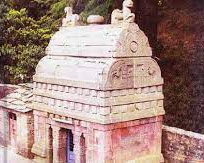
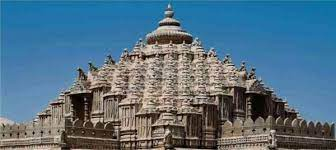
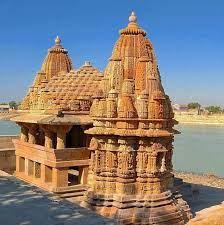
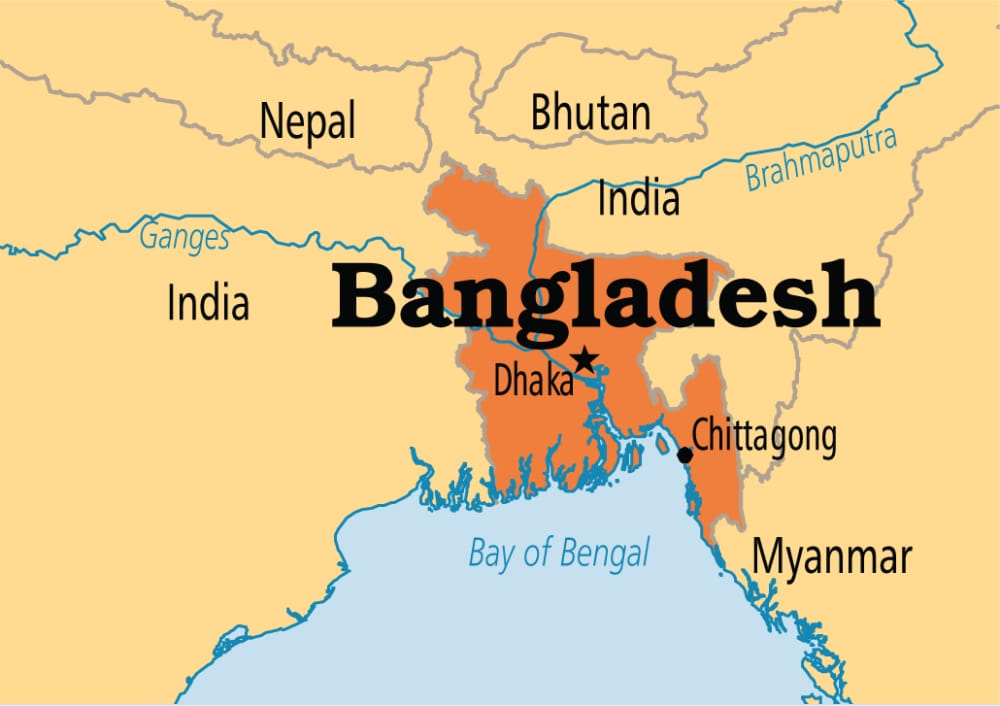
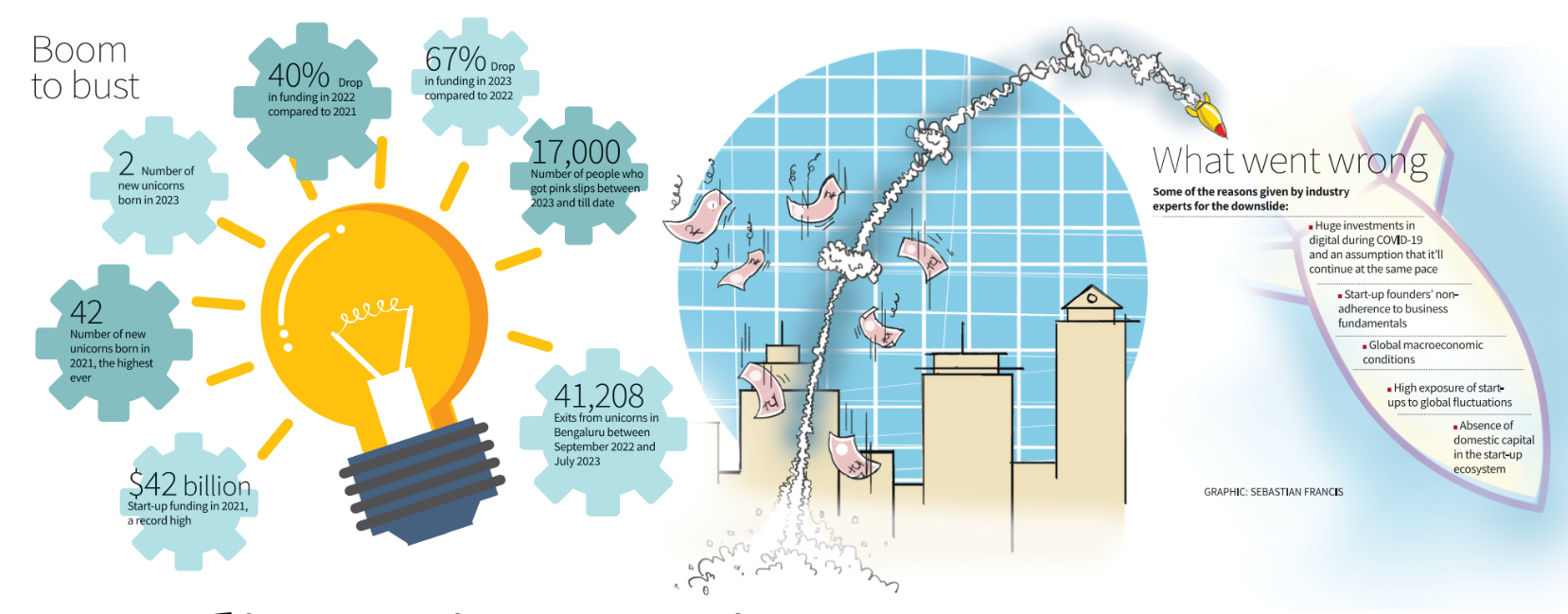
.png)